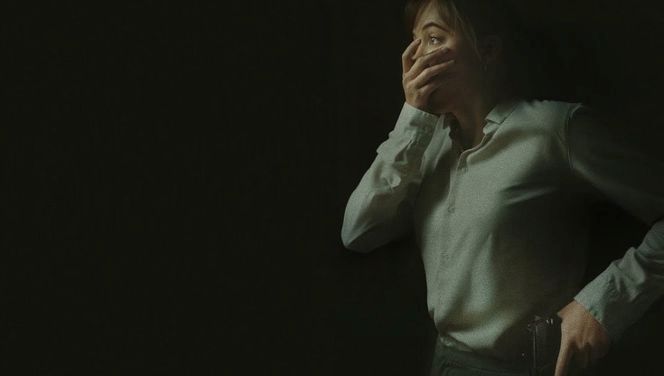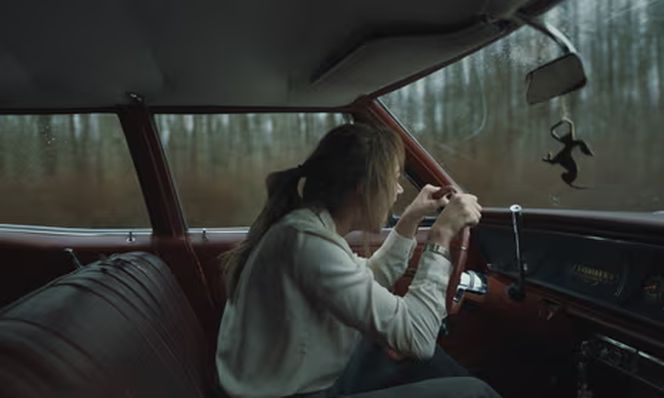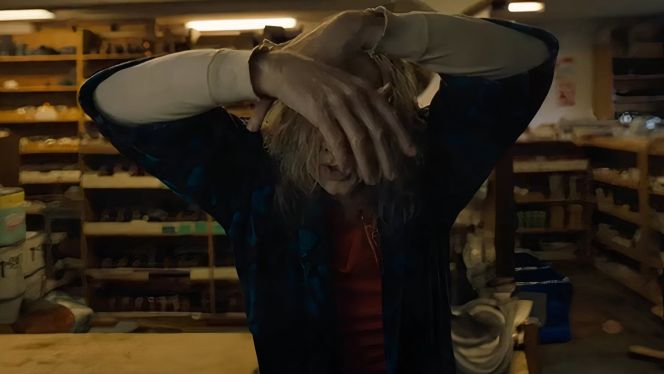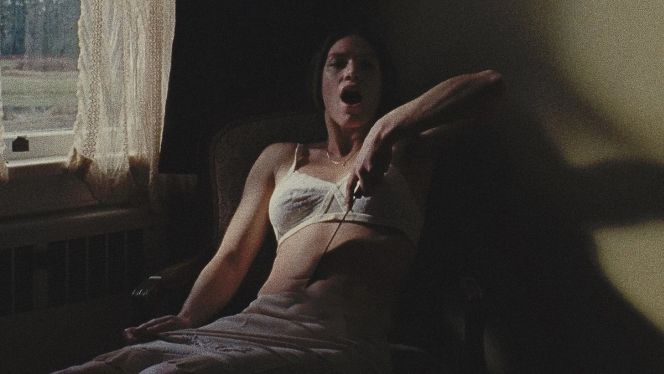MOVIE REVIEW – Lee (Maika Monroe), a young, ambitious FBI agent, is tasked with investigating a series of unsolved murders with the help of her senior mentor, Carter (Blair Underwood). Haunted by past family traumas, she delves deeper into a nightmare unfolding in the gray, leaf-strewn corners of small-town America, confronting a serial killer. As she digs further into the mystery, it becomes clear that the murders are linked to a dark, satanic cult.
If this premise intrigues you, you’re better off watching The Silence of the Lambs or Twin Peaks. Longlegs (in theaters July 27) starts with a similar plot but quickly veers into the absurd. The influences of The Silence of the Lambs and Lynch’s madness are obvious, but Longlegs also borrows from Se7en, Hereditary, and other superior horror films. The result is a beautifully stitched together but ultimately weak and uninspired story.
Welcome to the 90s!
Directed by Osgood Perkins, Longlegs is set in the early 1990s, a period depicted with all its drab, boxy banality by cinematographer Andres Arochi and production designer Danny Vermette. The film’s plot drifts slowly, dragging its psychically gifted heroine, FBI agent Lee (Maika Monroe), into deeper darkness. She is assigned to investigate a series of family murders where fathers kill their wives and children before turning the gun on themselves. These cases are mysteriously linked by coded messages found at each crime scene. Lee’s boss, Carter (Blair Underwood), is keen to understand the connection – perhaps there is a killer out there convincing these men to murder on his behalf.
The early part of the film is captivating, with a series of horrifying images occasionally interrupted by a knock at the door or a figure darting into the frame. Osgood clearly takes “inspiration” from other directors, but he does so with sleek confidence. The effective, discrete moments in the first part of Longlegs – the film is divided into three chapters – promise something grand and terrifying. What awaits at the end of the film’s dark corridor? What is the horror that drives the “monster”?
It’s clear that the film’s visual style and period settings are impressive, and many scenes are genuinely creepy. However, the real question is whether it can sustain the tension and mystery it sets up at the beginning.
“Hail, Satan!” Yeah, right…
The answers, unfortunately, throw the film into a chaotic mess. We encounter satanic worship and numerous other suddenly introduced plot elements, suggesting that Osgood has been steering blindly throughout. The ending is particularly disappointing. Horror films don’t always need logical explanations – ambiguity and contradiction are often appreciated – but Longlegs doesn’t even attempt stylish surreal ambiguity, falling instead into boring and heavy-handed absurdity. Moreover, one gets the feeling that Osgood is mocking the audience for believing that something meaningful could come out of his artistic setup.
We might have known things were going to get stupid the moment we saw Nicolas Cage, who plays the title role under a pile of prosthetics and a long, ridiculous wig. Cage can be a great actor, but he can also be an insufferable ham when he wants to be. In Longlegs, he trills and roars, giggles and sings. It’s a rather outdated and clichéd portrayal of a deranged serial killer, completely destroying Osgood’s elegant coldness in the film.
All Style, No Substance
In truth, Osgood certainly encourages Cage to fully immerse himself in the role, dragging Monroe and Cage into a final act that is neither entertaining nor thoughtfully absurd. Moreover, the film’s ending is heavy-handed, while David Lynch’s surreal thrillers, such as Twin Peaks or Lost Highway, are strong because Lynch’s films offer many interpretations, not just one that is spoon-fed to the audience.
Imagine if Twin Peaks had given us a concrete explanation for who Bob is, how he possessed people (like Laura Palmer’s father and others), what the Red Room is, where Cooper is during his “dreams” or visions, who the dwarf is, why he dances, and so on. The whole series would have lost its magic, right? Sadly, something similar happens with Longlegs.
A Meme Factory
Like many other heavily hyped but ultimately disappointing genre films, Longlegs seems designed to exist as a series of short scenes drifting across the internet and reappearing as memes on social media. Cage is just part of this cynical equation, a hired hand to ensure the film’s segments become viral.
Maybe the film’s annoyingly dumb ending is entirely intentional, crafted to elicit immediate, visceral reactions from audiences as they whip out their phones while leaving the theater. Or perhaps the whole thing was made earnestly, which might be even worse. Either way, Longlegs is stylish but empty, a series of beautifully ominous scenes with no real substance behind them. As Hannibal Lecter might say, it’s a tantalizing presentation, but the meat is as tough as shoe leather: dry and flavorless.
-Gergely Herpai “BadSector”-
Longlegs
Direction - 6.4
Actors - 6.6
Story - 4.7
Visuals/Music/Sounds - 8.2
Ambience - 6.5
6.5
MEDIOCRE
Longlegs tries to impress with its visual style, but it falls short in terms of story and character development. While the film’s initial moments are promising, it ultimately collapses into a ridiculous and weak plot. Osgood Perkins prioritizes style over substance, leaving the narrative feeling hollow and unfulfilling.

















Leave a Reply